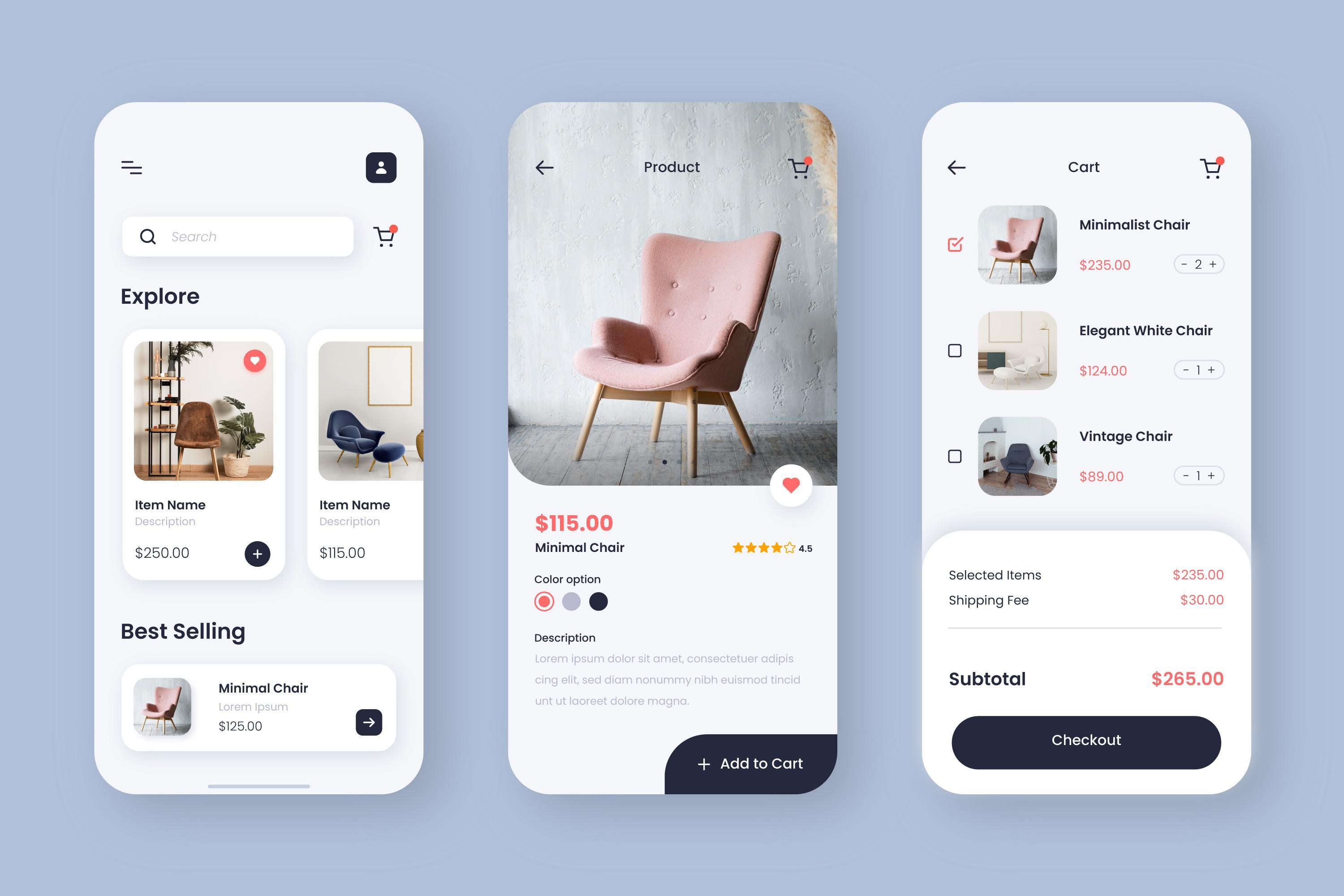Top Trends in Mobile App Design for 2024

As we are just halfway towards moving into 2025, it’s fair enough to say that the way mobile app preferences are changing, the possibilities of designing an app are endless. From infusing AI completely into the apps to personalizing every other feature present in the app, the mobile app design services provided by experienced design studios have taken a major turn, given the likings of a diverse user base.
Well, all of this has given rise to the increasing demand for mobile app designs that have some or other unique selling points. That’s why, businesses look for design agencies that have delivered exceptional projects in the past and are keen on exploring new technologies in the future. However, all of these requirements may spike up the cost of designing an app because the more advanced the features, the more advanced the cost will come out to be.
But, this doesn’t stop us from knowing about the app designs that are in trend and garnering the attention of the users every passing day. So, let’s take a look…
Some of the Topmost Mobile App Design Trends
With the pace at which people's likes and dislikes are changing, mobile app design services are rigorously trying to adapt continuously to fit perfectly according to users’ needs aligning with a cost-effective app design cost. All of this leads to the rise of different trends based on priorities. So, let’s see what trends we’re talking about…
AI and Machine Learning Integration
AI and Machine Learning have become crucial components of mobile app design. These technologies allow apps to learn from user interactions and provide personalized experiences. Additionally, AI-driven features such as chatbots, predictive analytics, and customized content recommendations are increasingly common. These capabilities improve user engagement by making the app more intuitive and responsive to individual needs.
Voice User Interfaces
Voice technology has advanced significantly, with voice assistants like Siri, Alexa, and Google Assistant becoming available almost everywhere. So, it’s not difficult to say that integrating Voice User Interfaces into mobile apps has seriously become a major trend. It’s all because VUIs provide a hands-free experience, which is especially useful for multi-tasking or users with disabilities. Hence, designing for voice involves creating smooth and intuitive interactions, requiring a deep understanding of natural language processing and user behavior.
Augmented Reality (AR) and Virtual Reality (VR)
AR & VR technologies are changing the way users interact with mobile apps entirely. These immersive technologies provide engaging and interactive experiences which makes them popular in gaming, education, retail, and real estate apps. In the current situation, AR and VR are being used to create more immersive shopping experiences, virtual tours, and interactive learning modules, than they were used a few years back. The challenge for designers is to integrate these technologies naturally and improve the overall user experience.
Dark Mode
Dark mode has been growing in popularity and continues to be a significant trend in the current year and beyond. It offers a modern look, reduces eye strain in low-light conditions, and can save battery life on OLED screens. Designers are now creating apps with both light and dark themes, allowing users to switch based on their preferences. This trend highlights the importance of adaptable design that caters to different user environments.
Minimalistic Design
Minimalism remains a strong trend in mobile app design. Over the past few years, there has been continued emphasis on clean, simple, and intuitive interfaces. This design philosophy focuses on eliminating unnecessary elements, ensuring that the user interface is straightforward and easy to navigate. Minimalistic design improves the aesthetic appeal of an app and enhances usability and performance, as fewer elements mean faster load times and smoother interactions.
Microinteractions
Microinteractions are subtle animations or design elements that guide users through an app, provide feedback, and enhance the overall experience. These small details can make a big difference in how users perceive and interact with an app. In 2024, designers are focusing on creating engaging and delightful micro-interactions that make the user experience more enjoyable and intuitive. These could be as simple as a button animation or as complex as a loading sequence that entertains while users wait.
3D Graphics and Animations
The use of 3D graphics and animations is another trend gaining traction this year. These elements make apps more visually appealing and engaging. Whether for gaming, product visualization, or interactive storytelling, 3D design adds depth and realism to the user experience. Designers are increasingly using tools and technologies that allow them to create high-quality 3D content that performs well on mobile devices.
Gesture-Based Navigation
Gesture-based navigation is becoming more prevalent in mobile app design. This trend involves using gestures like swiping, pinching, and tapping to navigate through the app. Gesture-based navigation can make the user experience more fluid and intuitive, especially on devices with edge-to-edge screens. Therefore, designers are exploring new and innovative ways to incorporate gestures into their apps, making navigation more natural and user-friendly.
Conclusion
As we move further into 2024, the trends in mobile app design reflect a growing emphasis on personalization, user engagement, and technological innovation. From AI integration to sustainable practices, these trends shape the future of mobile apps, making them more intuitive, secure, and enjoyable to use. Designers and developers must stay ahead of these trends to create apps that meet and exceed user expectations, ensuring a competitive edge in an ever-evolving digital landscape.
- Art
- Causes
- Best Offers
- Crafts
- Dance
- Drinks
- Film
- Fitness
- Food
- Games
- Festival
- Gardening
- Health
- Home
- Literature
- Music
- Networking
- Other
- Party
- Religion
- Shopping
- Sports
- Theater
- Wellness



